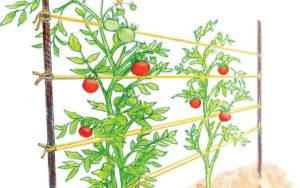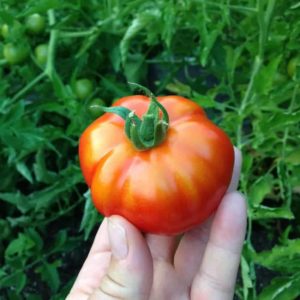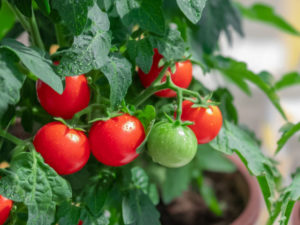Tomatoes are a household favorite globally, which is why lots of people try to grow tomatoes in their vegetable gardens. The scientific name for the tomato vine is Solanum Lycopersicum, and tomatoes are, in fact, just the edible berry that grows from this plant.
Although tomato vines can be grown pretty much anywhere, wild variations of the vine can be found in South Africa. The fruit was domesticated centuries ago and introduced in Europe by the Spanish.
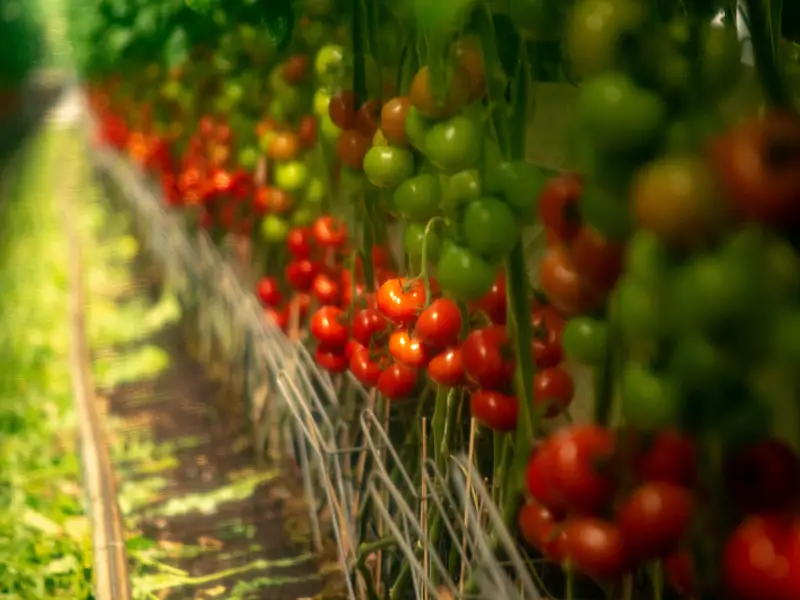
Read through the information in this post to learn everything that you need to know about tomato vines and more. Save this article for later so that you don’t forget any important tomato growing tips and tricks.
| Scientific Name | Solanum Lycopersicum |
| Common Names | Solanum Lycopersicum, tomato, tomato vine |
| Hardiness | Very hardy, it can be grown easily in USDA hardiness zones five to eight |
| Indoor or Outdoor Plant? | It can be grown indoors and outdoors |
| Sun Exposure | Six to eight hours of sunlight per day |
| Water | Between one to two inches of water per week |
| Size | Up to 12 feet fall, with most plants averaging six feet tall |
| Soil Type | A fertile loam with well-drained soil |
| Soil pH | pH levels should be between 5.8 to 7 |
| Flower | Small yellow flowers |
| Growing Difficulty Level | Easy |
Appearance and Characteristics
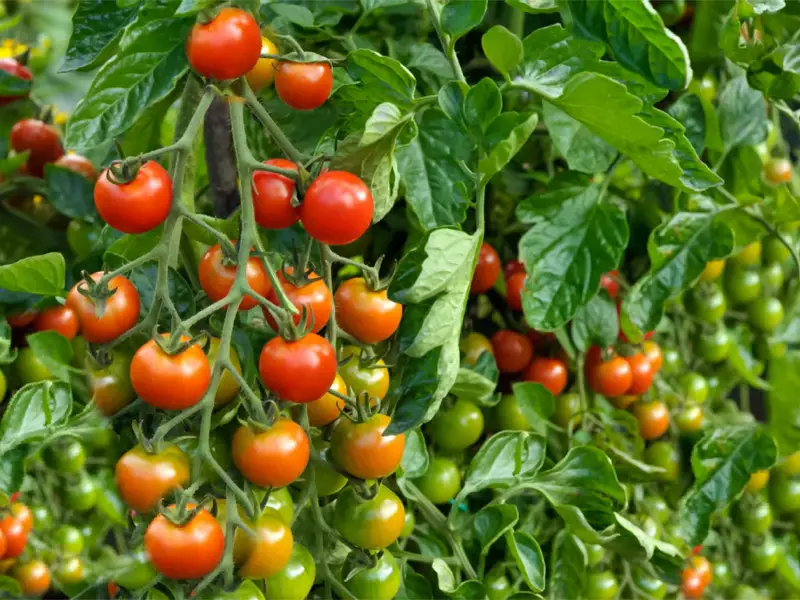
Tomatoes are round fruit that is usually red, but it isn’t uncommon to find orange, green, and yellow tomatoes, depending on their type.
They grow on thick vines with green leaves. The tomato vine plant will produce soft yellow flowers during its blooming season.
Tomato Vine Growing Guide
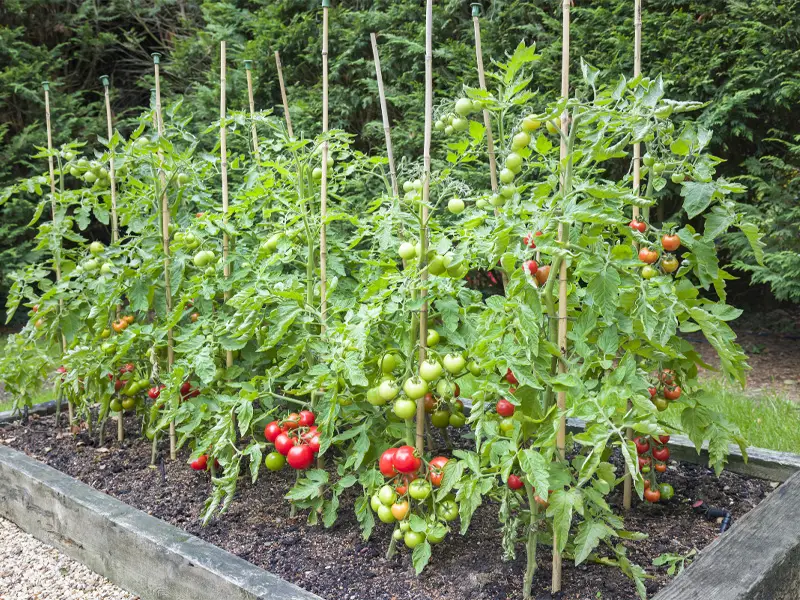
Although the tomato vine is very easy to grow, there are some general rules that you should stick to in order to yield a good harvest.
As long as you stick to the tips and suggestions below, your tomato vine should produce ripe and juicy tomatoes all year round.
Water
Your tomato vine plant will probably need about 1.2 gallons of water every week once the plant is established.
If the plant is immature, you will need to water the soil generously to ensure the plant gets a good boost of moisture.
Watering the tomato plant thoroughly will encourage a strong and healthy root system to develop.
This is particularly important during the growing season to have enough strength to grow viable fruit.
Top Tip: Avoid watering the plant overhead as this could spread diseases and infections throughout the plant. Instead, water the plant directly at the base.
Light
Tomato plants are sun worshipers. They thrive in sunny conditions and ideally should get about six to eight hours of sunlight per day.
If you live in an area that gets more than six to eight hours of sunlight per day, you should use shade cloths or other methods to protect your plant from getting sunburnt. 3
Soil
Another wonderful thing about growing tomato plants is that they can grow in a wide variety of soil as long as it has good drainage.
The most important thing to remember is to fertilize the soil accordingly.
Aged animal manure or a thick layer of organic compost is recommended to keep the soil rich and fertile. As long as the soil’s pH level stays between 5.8 to 7, your plant will grow well.
Temperature and Humidity
Hot, humid weather is a tomato vines best friend. Temperatures between 70 and 80 degrees Fahrenheit are ideal for tomato plants, and humid air prevents stunted growth.
Understandably, most areas aren’t hot and humid all year round, so growing your plant in a greenhouse is a great way to protect them during frost.
Potting and Re-Potting
It is super easy to pot tomato vines. Follow the step-by-step guide below to learn how to pot your tomato vine properly.
Select a Type of Tomato
As I mentioned earlier, tomatoes come in various shapes, sizes, and colors. Not all types of tomatoes taste the same either, so do your research.
Choose a Container Size and Well Fertilized Soil
Tomato vine plants should be potted in large containers. You want your tomato plant to have plenty of room to grow strong roots.
Purchase potting soil with good drainage from your local garden center. You can mix this with your soil if you need to.
Burry the Stem in Soil
Burry the stem of the plant deep into the soil.
Water Well
Immature plants need a lot of water to thrive. Make sure you keep the soil moist and nourished until the plants’ roots have developed.
Feed With Fertilizer if Needed
Poor quality soil should be fed with fertilizer so that your tomatoes get a helping hand. You can add fertilizer to store-bought potting soil too if you feel like your tomatoes need a helping hand.
Water Consistently
Stick to a consistent watering schedule for the best growing results.
Propagating and Pruning
Propagating tomato plants is very easy. Use sharp, sterile scissors to cut a healthy stem from the mother plant, and follow the potting steps above to propagate your plant.
Top Tip: You should place the stem you wish to propagate in a glass of water and in a sunny location until you see a root system begin to develop. Once you see some roots, you can plant the stem in the soil as you would any other new plant.
Pruning your tomato plant is vital for keeping it happy and healthy all year round. You will need to perform a visual check every few days to check for diseases and pests.
Diseased areas of the plant should be removed right away; otherwise, you run the risk of the disease spreading and killing your plant.
Growing Tomato Vine Advantages
The tomato vine will produce fruit very regularly, so you won’t have to wait months for a harvest. There are many health benefits associated with eating tomatoes, the main one being its wonderful antioxidant properties.
Studies have proven that eating tomatoes regularly reduces your risk of heart disease and cancer, and it is a great source of vitamins and minerals.
Tomato Vine Pests, Diseases, and Problems
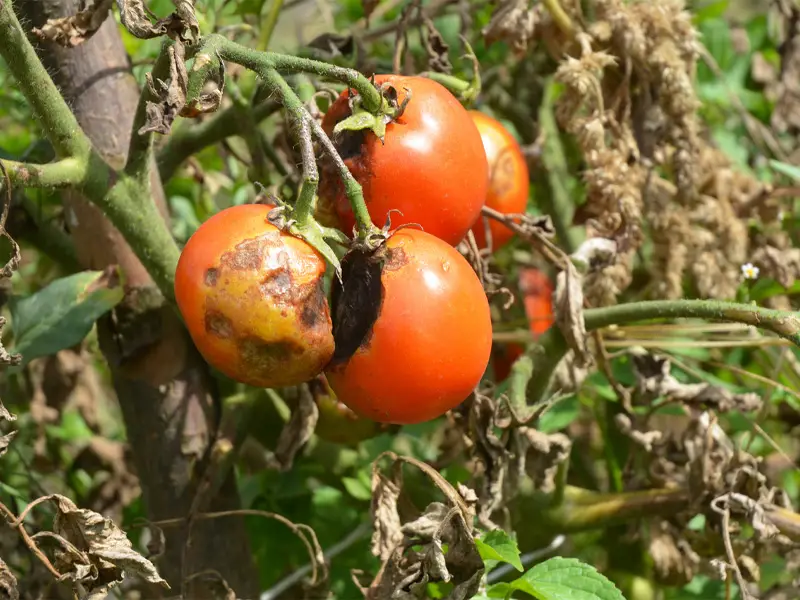
The tomato vine is prone to pests and diseases, so being vigilant is key to keeping your plant healthy. Most tomato diseases can be treated, but choosing a disease-resistant variety of tomato plants will help you manage diseases and pests.
Early blight, southern bacterial wilt, septoria leaf spot, and verticillium wilt are all common tomato vine diseases.
Treatments include trimming and pruning away diseased areas of the plant and treating with oils or chemicals if needed.
You can find organic alternatives if you don’t want to use chemicals on your plants.
Keep an eye out for the following bugs:
- Aphids
- Cutworms
- Flea beetles
- Root-Knot Nematodes
- Blister Beetles
- Hornworm
- Slugs and Snails
- Spider Mites
Some insect infestations can be treated by simply removing them from the plant, and other pests will require insecticidal soaps and oils to repel them.
Again, there are always organic options available, so chemical intervention is not necessary.
Tomato Vine Seeds
Take a look at the links below if you want to purchase high-quality tomato vine seeds:



FAQs
What are the first signs of overwatered tomato plants?
An overwatered tomato vine plant will produce fruit that split or blister. Examine their lower leaves for blistering.
How long does it take for a tomato to grow on a vine?
Tomatoes take roughly 20 to 30 days to grow, which is great. You will have a high and fast turnover of fruit if you look after your plant properly.
Should I water my tomato vines daily?
How often you water your tomato vine will depend on the climate they are growing in plants that are growing in hot climates will need to be watered every morning before it gets hot to ensure the plant doesn’t dry out or wilt.
Why have my tomato vine leaves begun to curl up?
High winds, changes in temperature, and other external weather factors can cause slight changes in your tomato vine.
Curling leaves are not anything to worry about but if you notice other changes such as wilting, shriveling, or blistering, you should take measures to protect your plant.
When should I stop watering my tomato plant?
Reducing the amount of water the tomato plant gets when the fruit is almost ready to ripen will help the plant focus on ripening the plant.
This is a strategy that farmers use all over the world to improve the quality of their yield. This trick may take you a few tries to master, so don’t stress if you don’t get it to spot on the first time.
I hope you feel confident in your abilities to grow a tomato vine plant to its full potential now that you have read this guide. Please share your experiences in the comments section below so that we can all learn from one another. Your tips and tricks are greatly appreciated!


